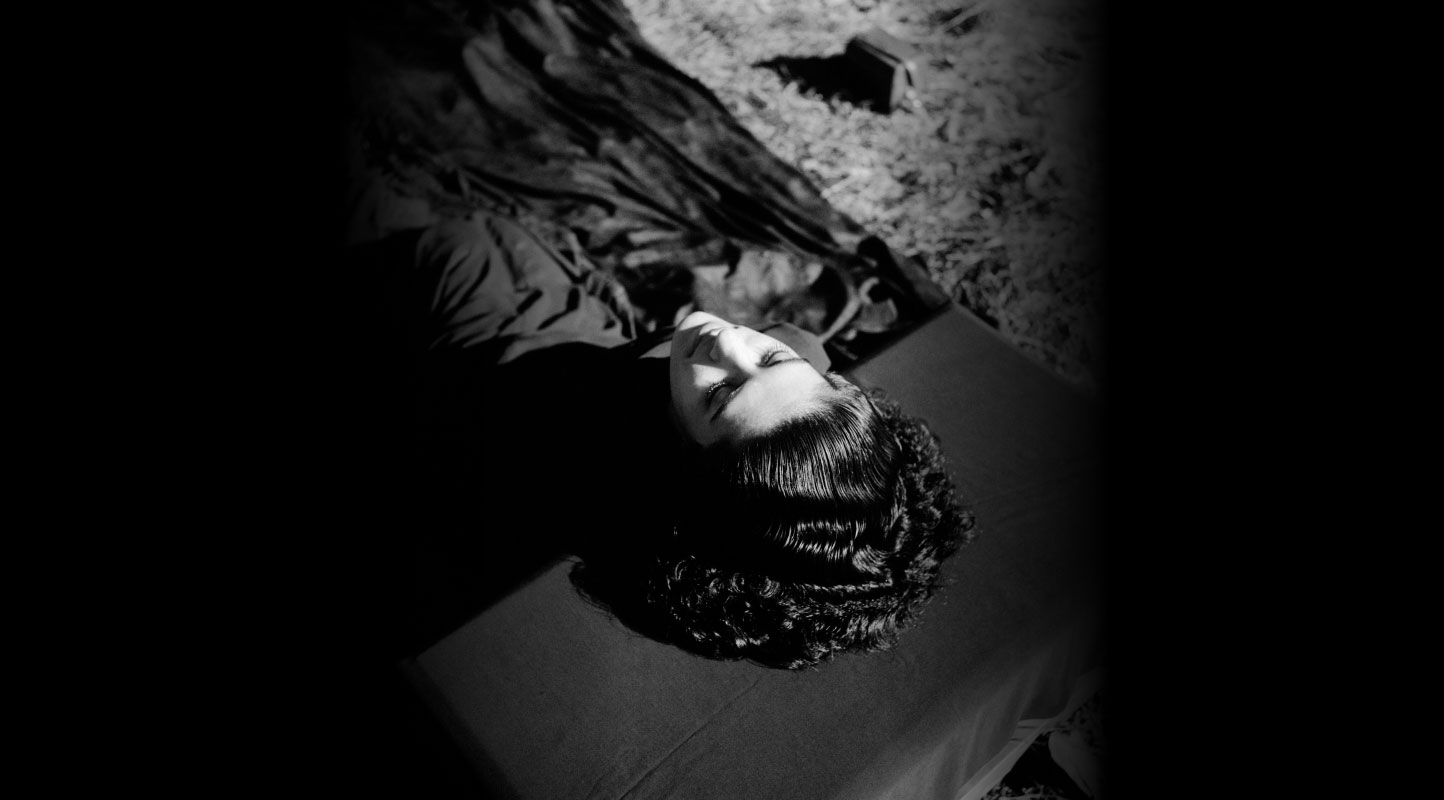Seeking Hope: Resistance in 'Like Air, I’ll Rise'
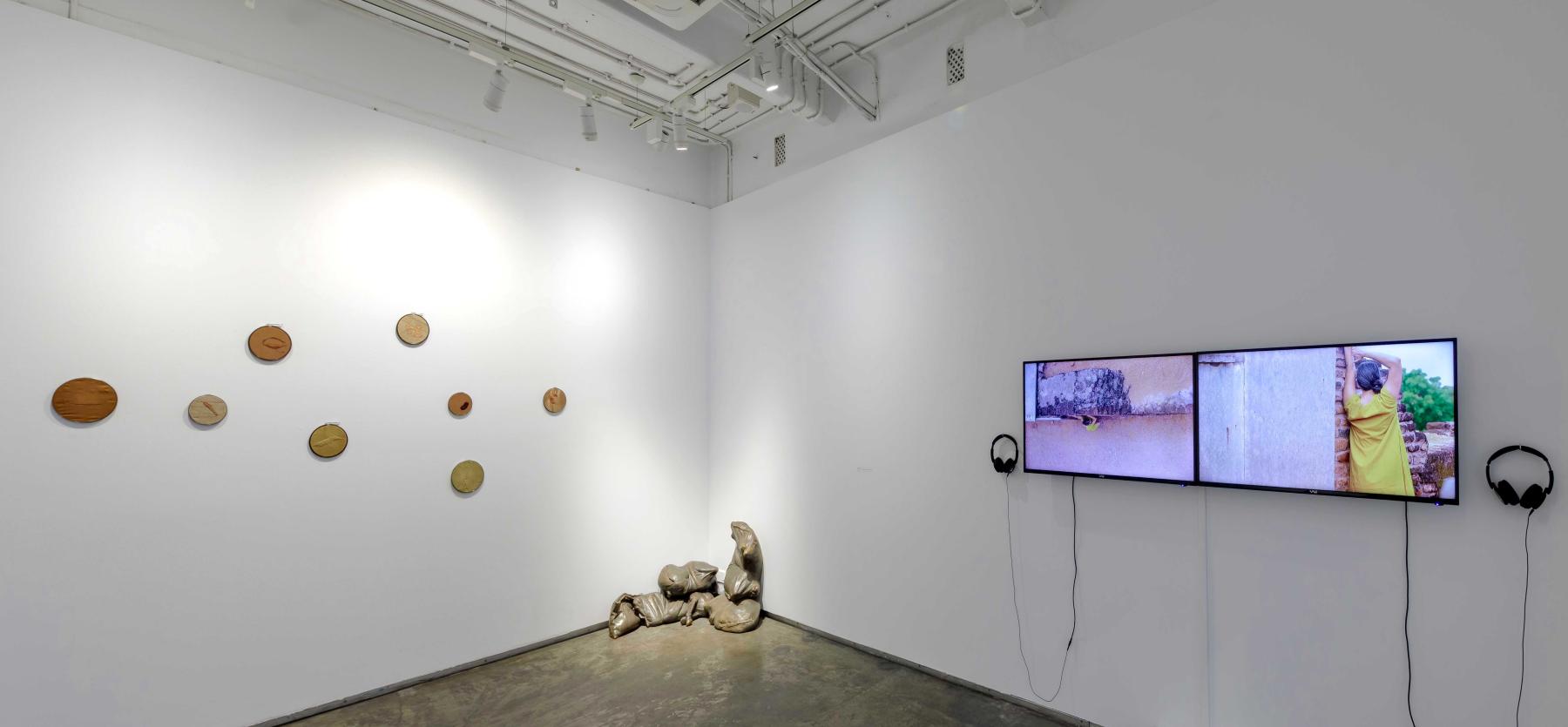
Installation view of Like Air, I’ll Rise at Experimenter Ballygunge Place. (Photograph by Vivienne Sarky. Kolkata, 2024–25.)
In 1978, Maya Angelou penned “Still I Rise” as a statement against the racism and sexism she faced in the United States. While Angelou’s words were framed in the context of the socio-political landscape that surrounded her, her poetry has, since then, become a potent form of strength that people marginalised all over the world look up to. Like Air, I’ll Rise, Experimenter’s last exhibition at Ballygunge Place, takes its name from Angelou’s much-quoted poem as an homage to the writer and activist’s role within the women’s rights movement.
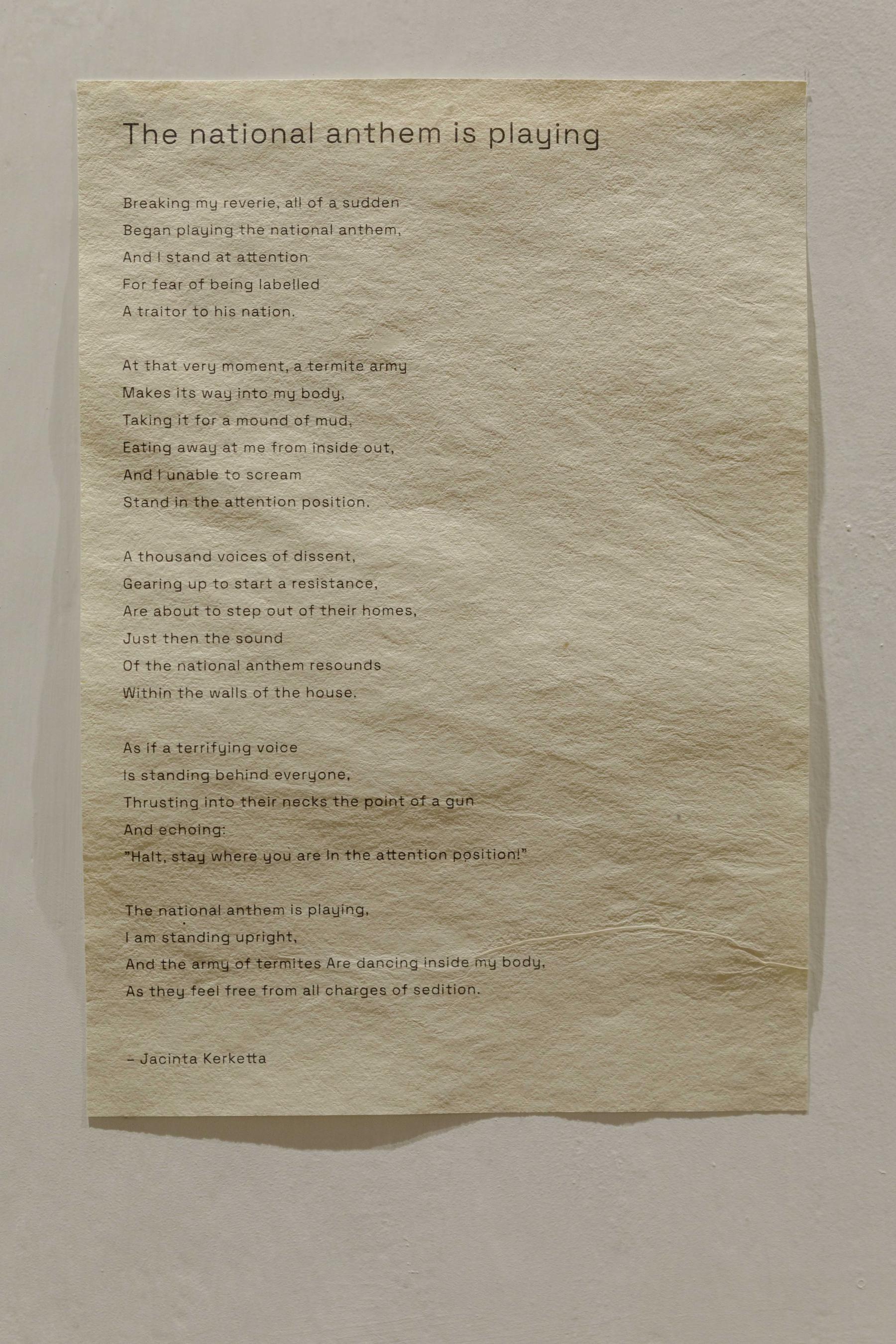
“The national anthem is playing.” (Jacinta Kerketta. Poem taken from जड़ों की ज़मीन | Land of the roots, Hindi/English bilingual poetry collection, published in 2018.)
Bringing together a set of women artists, the exhibition invited each of them to present works that are rooted within the premise of solidarity. Oraon Adivasi journalist, poet and activist Jacinta Kerketta outlines the spectrum within which patriotism lies and the wisdom of the land that indigenous communities safeguard.
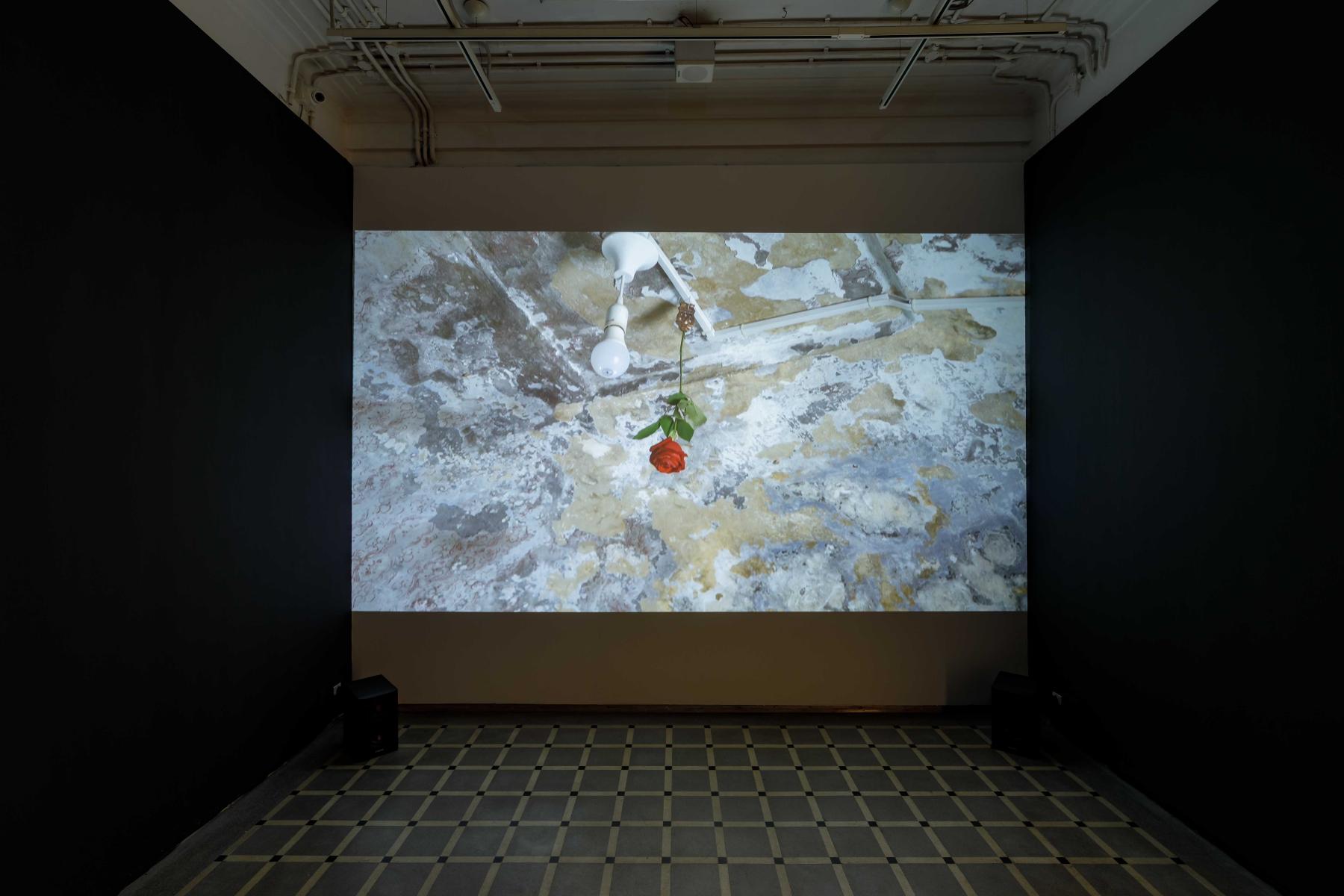
Installation view of "letter to a friend" as part of Like Air, I’ll Rise at Experimenter–Ballygunge Place. (Emily Jacir. 2019. Single channel video, 43 mins. Photographed by Vivienne Sarky. Kolkata, 2024–2025.)
Emily Jacir and Bani Abidi, in their image-making, talk about the genocide in Gaza and the fault lines that came up as the world watched the extermination of Palestinians unfold on their screens.
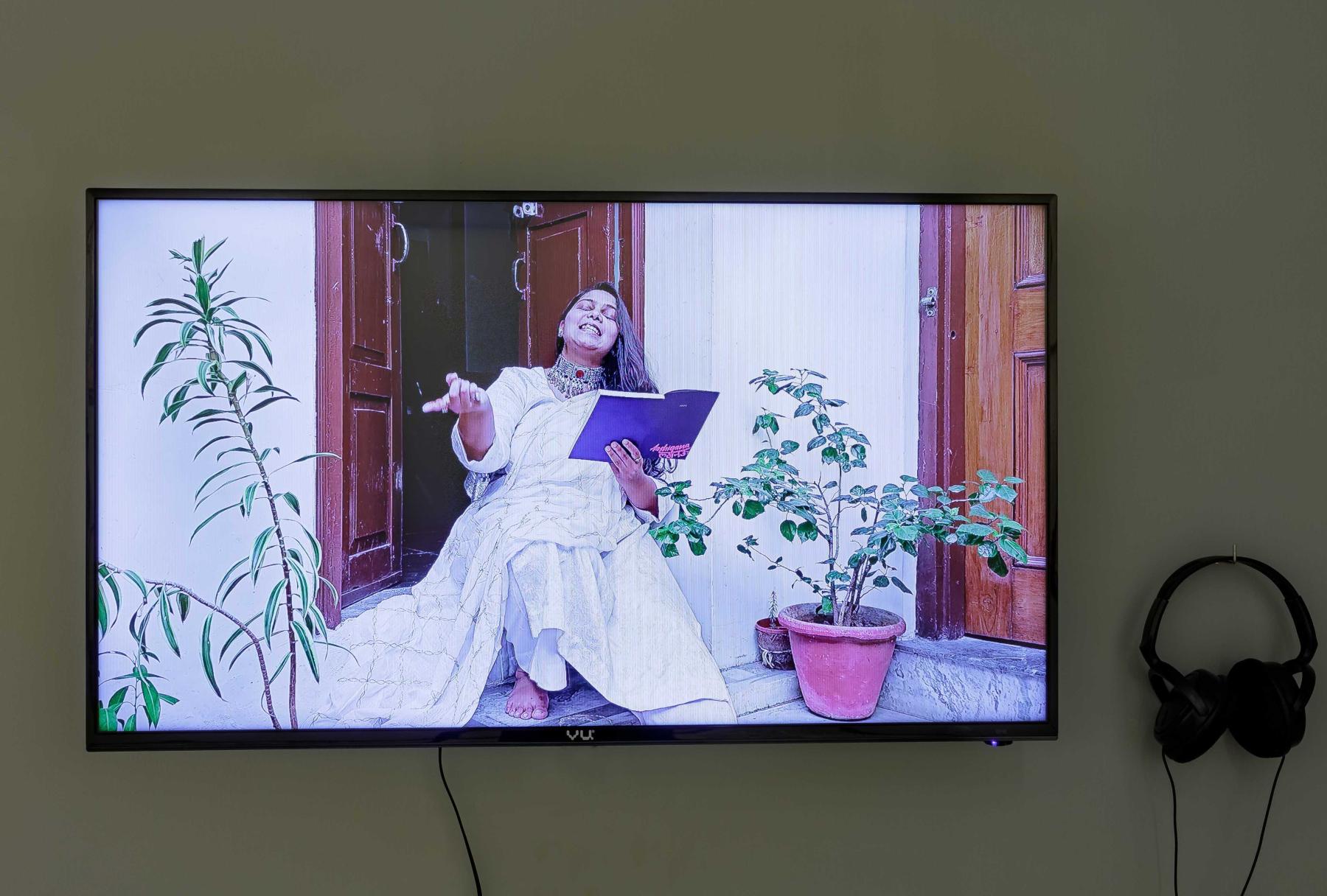
Installation view of Sabika Abbas Naqvi reciting her poem“Madri zaban ein” as part of from Like Air, I’ll Rise at Experimenter–Ballygunge Place. (Sabika Abbas Naqvi. 2024. Single channel video with sound. Photographed by Vivienne Sarky. Kolkata, 2024–25.)
Sabika Abbas Naqvi’s performance of spoken word poetry is a powerful ode to community, rooted within her mohalla (neighbourhood) in Lucknow, where she takes courage from the sisterhood of the women in her locality.
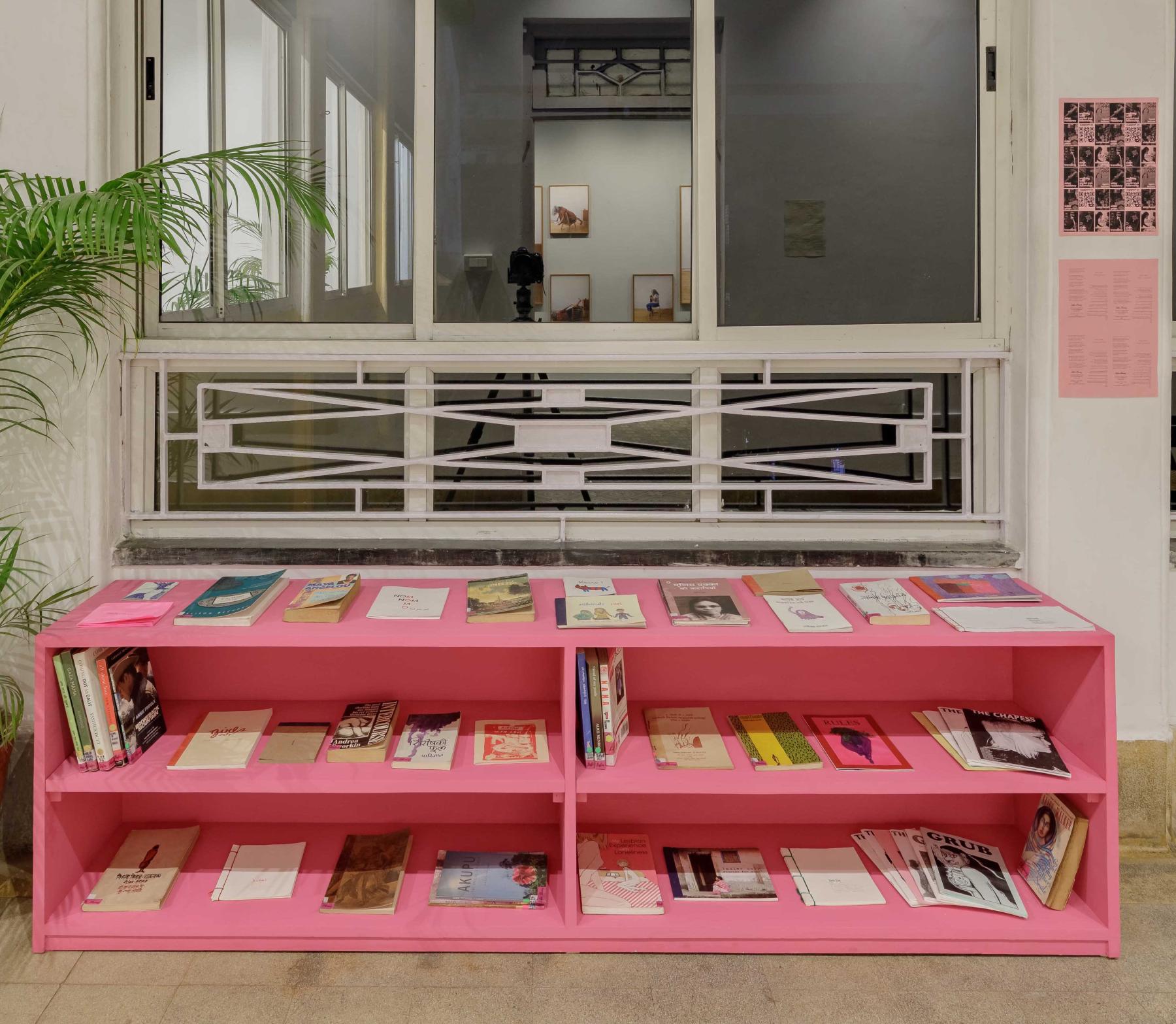
Installation view of Sister Library as part of Like Air, I’ll Rise at Experimenter–Ballygunge Place. (Photographed by Vivienne Sarky. Kolkata, 2024–25.)
The pink mobile-library desk from Sister Library with a travelling set of feminist literature presents an archive of zines, books and alternative publications.
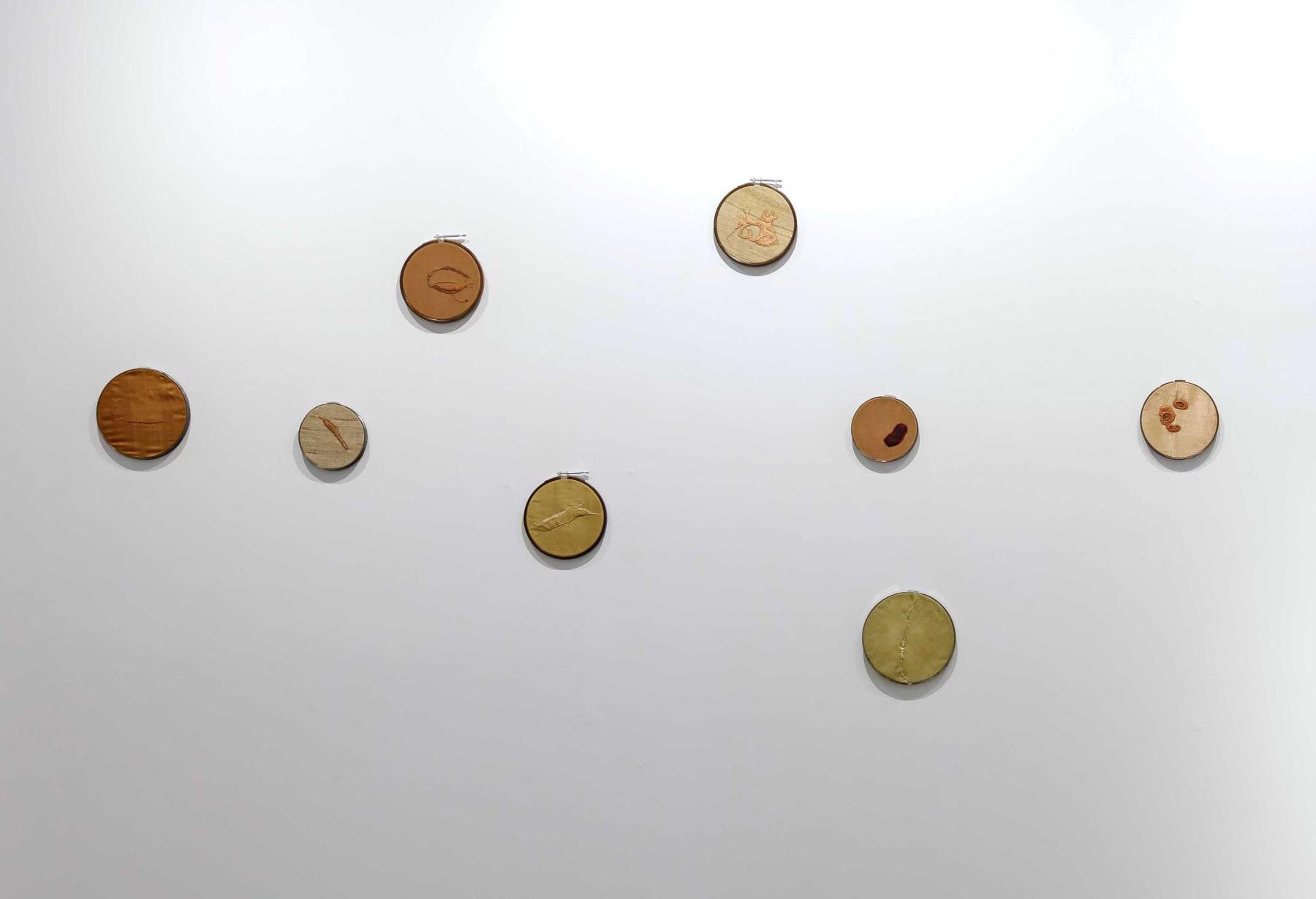
"Scars of Labor". (Bhasha Chakrabarti. 2018. 4-7 in diameter each, Suite of 8, Fabric, embroidery thread, metal and wooden embroidery hoops.)
Bhasha Chakrabarti’s delicately hand-embroidered panels and Sakshi Gupta’s sculptural objects bring attention to the physicality of labour.
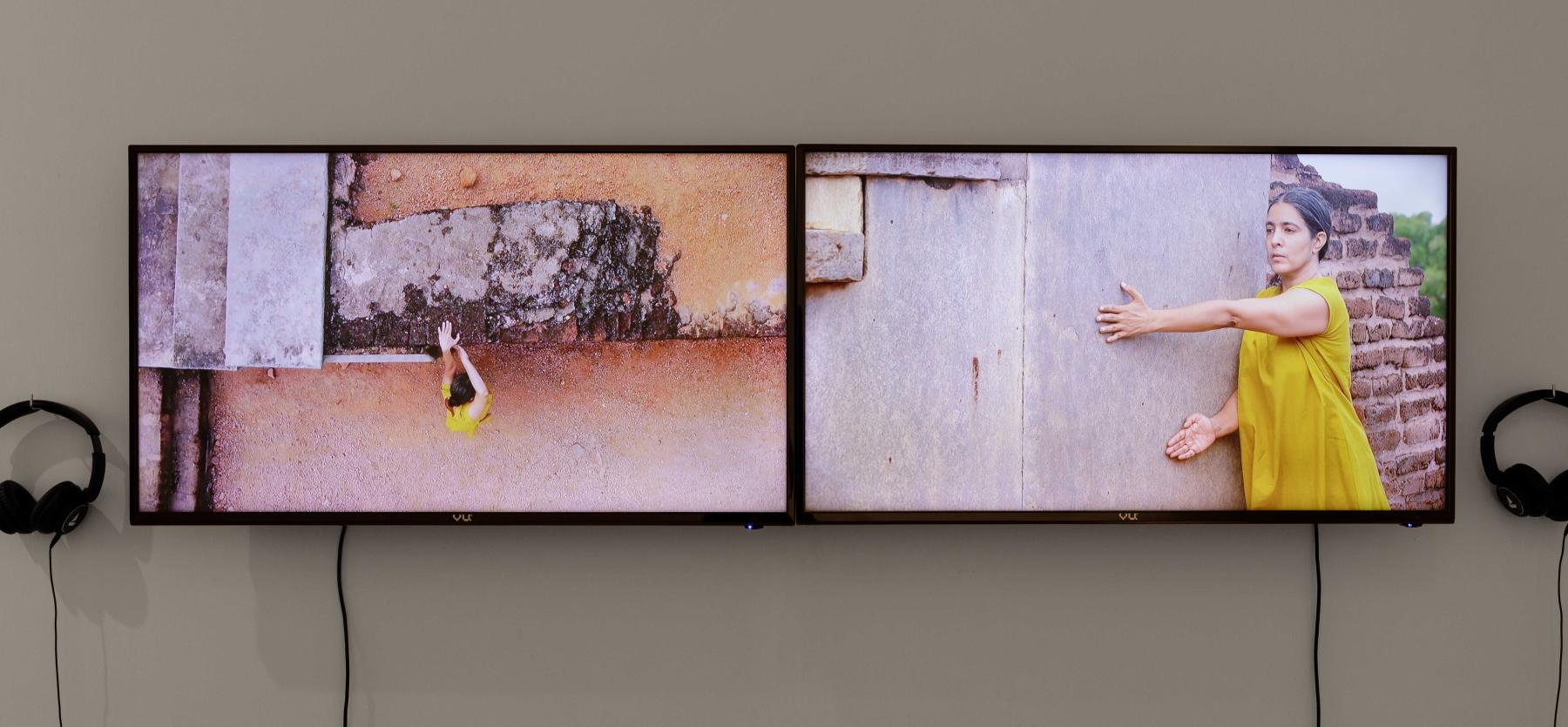
Installation view of A Slightly Curving Place–A Study as part of Like Air, I’ll Rise at Experimenter–Ballygunge Place. (Padmini Chettur. 2020. Two channel video with sound, 26 min 40 sec [loop]. Photographed by Vivienne Sarky. Kolkata, 2024–25.)
Padmini Chettur further takes one’s attention to the physical body and its presence within a site.

Installation view of Idi Katha Maatramena as part of Like Air, I’ll Rise at Experimenter–Ballygunge Place. (Yugantar Film Collective. 1983. Single channel video with sound–Telugu, 25 mins. Photographed by Vivienne Sarky. Kolkata, 2024–25.)
Yugantar Film Collective’s exploration of what the documentary meant for social justice movements is framed through four of their monumental works made throughout the ’90s.
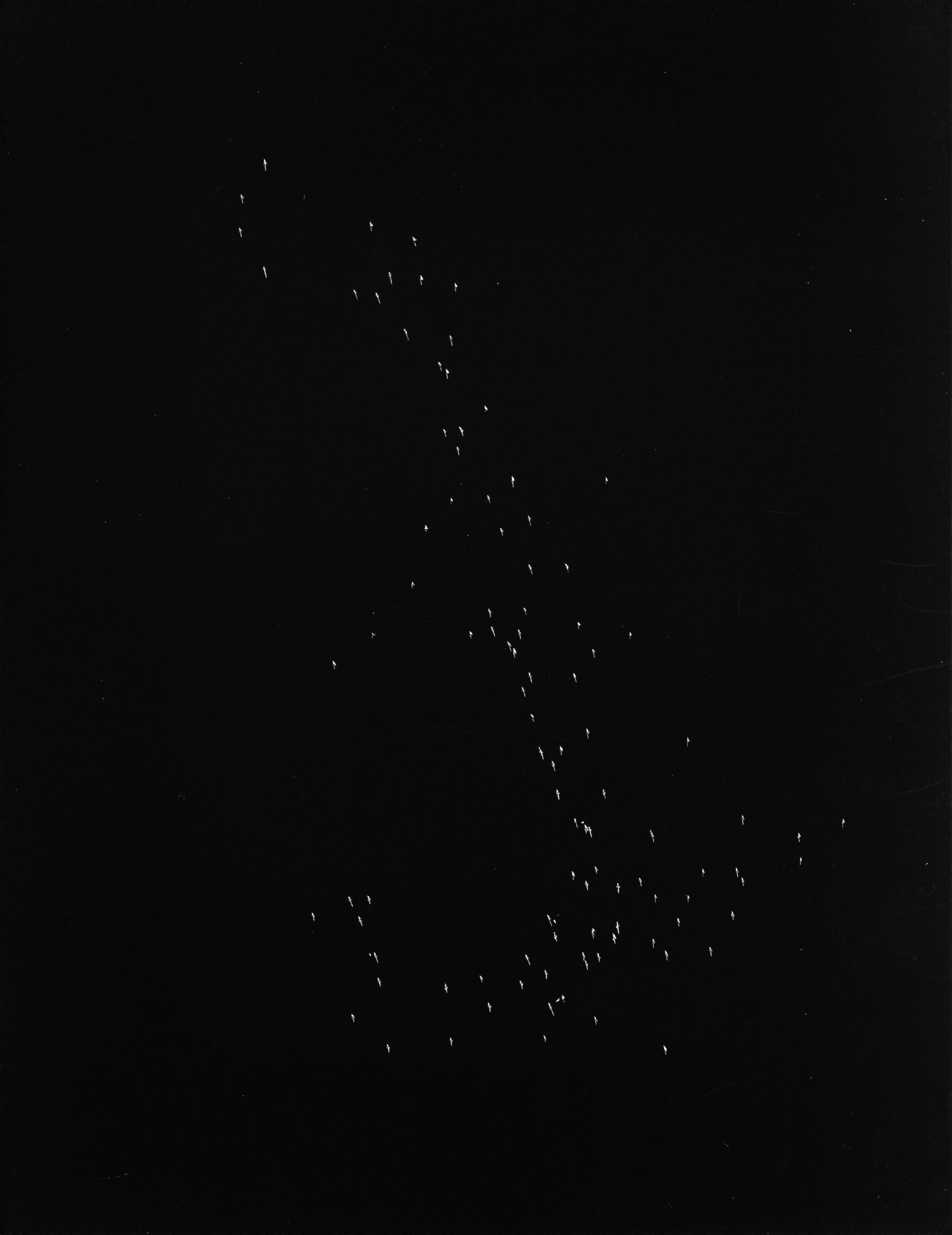
"Breath Count 50" (Ayesha Sultana. 2024. Clay-coated paper, Suite of 4, 11 x 8 1/2 inches each, 27.9 x 21.6 centimetres each.)
Ayesha Sultana situates the individual in dreaming what resistance could be like.
Moushumi Bhowmik’s special recording of her song “Swapno Dekhbo Bole” within the same space ties everything together, giving audiences hope for a better world.
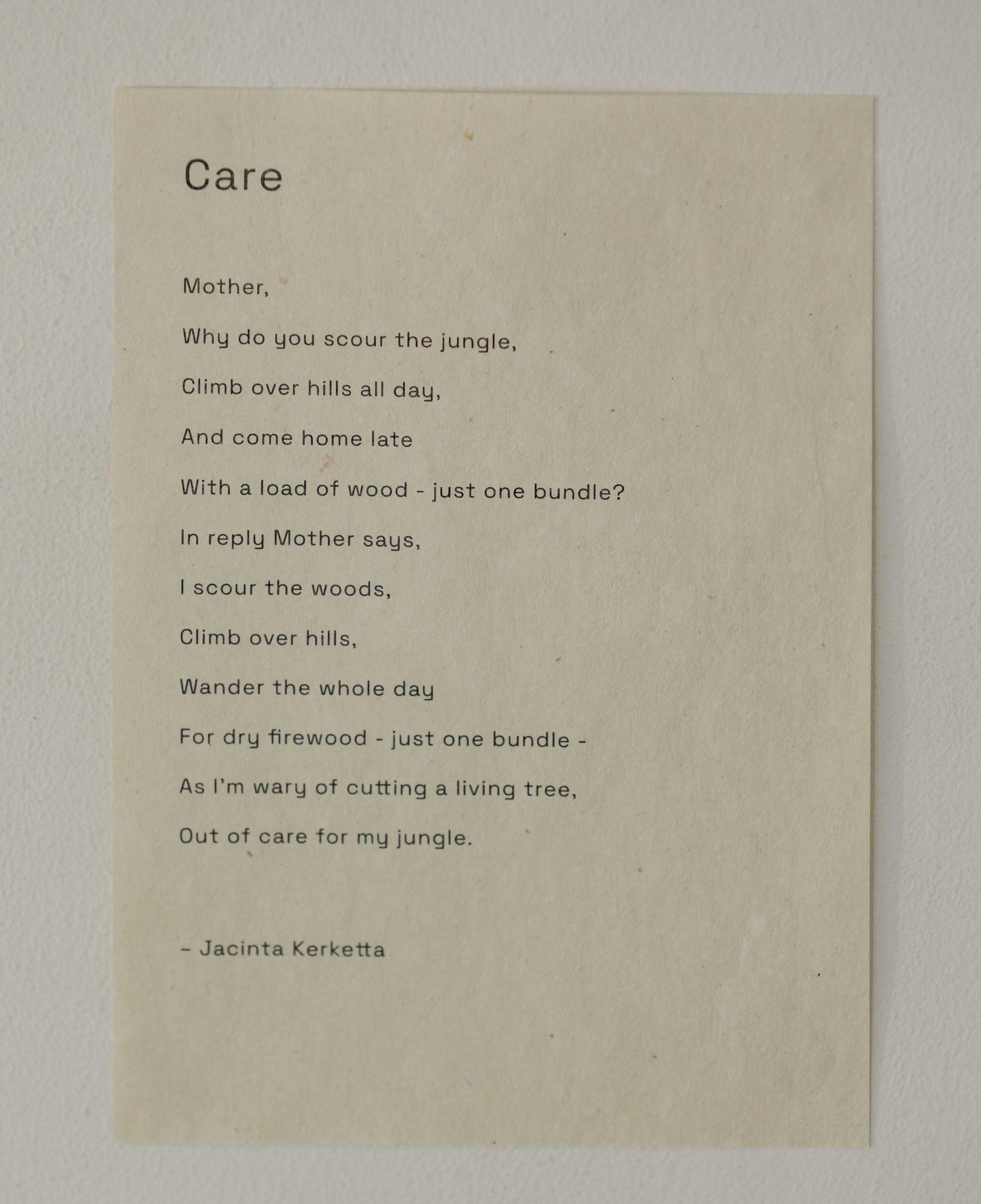
“Care”. (Jacinta Kerketta. Poem taken from जड़ों की ज़मीन | Land of the roots. Hindi/English bilingual poetry collection published in 2018.)
Interspersing practices old and new, within the traditional confines of the arts and outside, diverse forms of making and viewing exist within this exhibition—almost in the form of intergenerational and interdisciplinary conversations. And while many different subject matters are approached by each artist in their own unique style, the central thread is their concern for the state of the world.

The exhibition opened just three months after reports surfaced of a brutal rape and murder of a trainee doctor at a government medical college and hospital in Kolkata. In the aftermath of the discovery of the incident, rallying cries of #wewantjustice were heard across the city as women from all quarters of life rose up in protest. Coming close on the heels of the months of protest that brought to the forefront women-run initiatives like ‘Reclaim the Night’, Experimenter’s approach to showcasing women-led narratives adds to the ongoing discourse in the city on what it takes to build safe spaces. In expanding these conversations, each project in this exhibition offers the chance to reflect on what resistance looks like—both on a personal level and beyond.

"Breath Count 50." (Ayesha Sultana. 2024. Clay-coated paper, Suite of 4, 11 x 8 1/2 inches each, 27.9 x 21.6 centimetres each.)
There is the individual, as seen in Sultana’s series Breath Count, where each portrait is like a journal entry marking time felt through the act of breathing. There is the community, represented through interventions from the Sister Library, Sabika Abbas Naqvi and the Yugantar Film Collective. And then there is the fluidity, which allows for the sonic and the visual to co-exist, making space for diverse explorations of what it means to be an artist. Each practitioner invites the viewer to consider the role of art in a significantly troubling time for the world. And staying true to the title of the exhibition, each project echoes Angelou’s powerful words, as they seem to reverberate with chants of “I rise, I rise, I rise…”
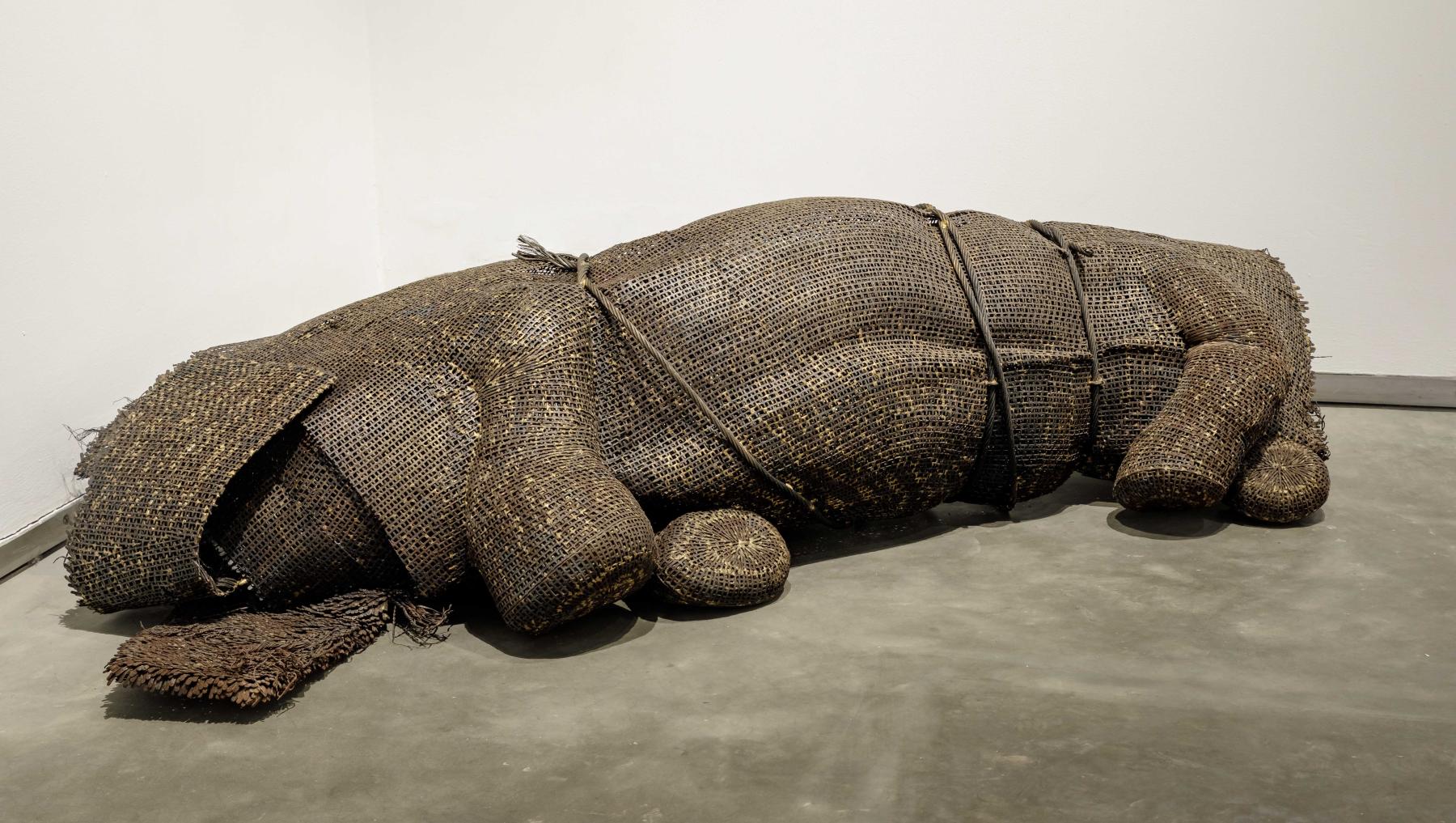
"Untitled." (Sakshi Gupta. 2024. Metal scrap, 64 x 26 x 16 1/2 inches, 162.6 x 66 x 41.9 centimetres.)
To learn more about gendered expressions of resistance, read Anisha Baid on Ashfika Rahman’s photo series Rape is Political and on Indu Antony’s public art project Cecilia'ed around women’s safety in urban India, Najrin Islam’s exploration of Somaya Abdelrahman's photoseries on genital mutilation practices, A Permanent Wound, Samira Bose on Afrah Shafiq's archival and multimedia work Sultana's Reality and Vishal George on Aditi Maddali's Songs of Our Soil, which portrays the tradition of Uyyala songs of women agricultural workers in Telangana.
All images are courtesy of the respective artists and Experimenter Gallery, Kolkata.



